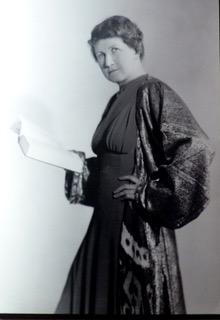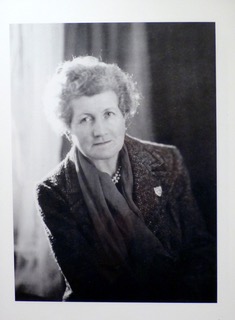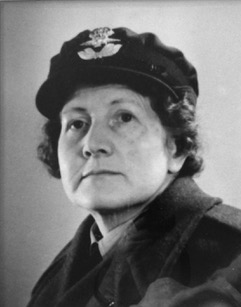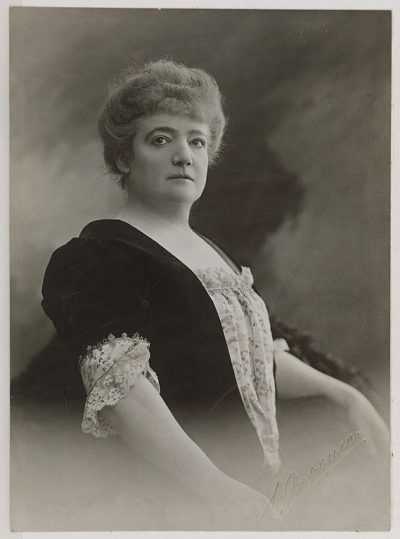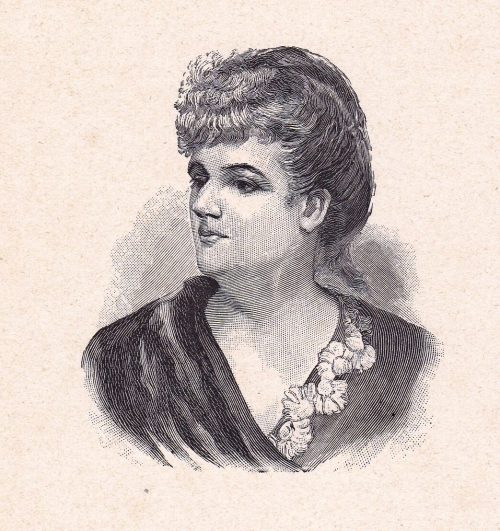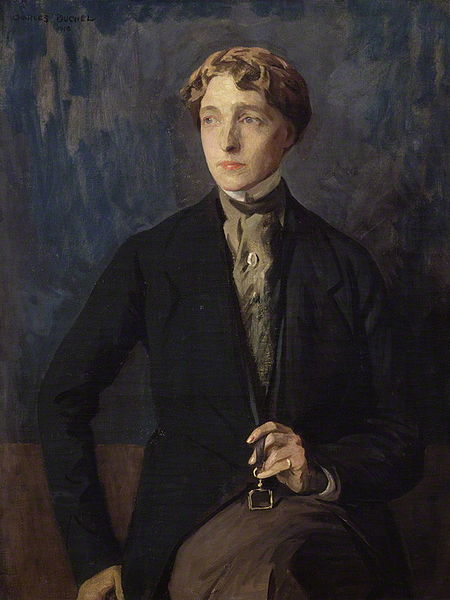On this day, we honor ALL aspects of women’s creativity. Whether a woman chooses to express herself through music, art, poetry, or creating tiny humans, each and every expression of creativity helps other women to express themselves more authentically, which in turn leads to a more authentic society.
Nearly all of the women featured on our “Eternal Feminine Podcast Series” struggled with social views of “women creators,” which often led to them abandoning or burying creative ambitions for domestic life; or rejecting domestic life for creative freedom. We are grateful that they were able to create what they did, and that we have been able to share their fascinating stories and compositions with the world through our inaugural podcast series. You can re-visit all of the episodes here.
Speaking of creative works – we have been very busy with our other creative project: Opera Sustenida. Following the success of our second concert in February, we’re preparing a concert of works from the Bel Canto and Romantic periods, to be livestreamed in September. We’ll be featuring even more guest artists and choristers on this concert and we’ve also submitted a grant proposal to the Canada Council for the Arts, which we hope will allow us to bring our Opera Sustenida concerts to an even wider audience.
For those of you who were looking forward to the concert we were planning (“Neurotica: Ich grolle nicht and other love songs”), we haven’t forgotten you! We are still planning to do this, but we are waiting till live rehearsing and performing are possible.
In the meantime, thank you for joining us as we honor women’s creativity, past and present.
Best,
Daniella and Suzanne
-
-
Amice Calverley
If you are listening on a mobile device, please click “Listen in browser.”
In this episode of The Eternal Feminine Podcast Series, we discuss Canadian composer Amice Calverley (1896-1959). Born in London (UK) to Edmund Leveson Calverley and Sybil (née Salvin) Calverley, Amice and her family ultimately settled in Oakville, Ontario (Canada) in 1912. Calverley studied composition under famed composers Healey Willan and Ralph Vaughan Williams before pursuing a career in archaeology. Her entire body of compositions (mostly from her studies with Willan) have been entrusted to the care of the Canadian Music Centre in Toronto by her niece, Sybil Rampen.
We were very fortunate to interview Ms. Rampen, who offered a unique perspective on Calverley’s life and works.
Listen to the full podcast to hear excerpts from our interview with Ms. Rampen, as well as our recording of Calverley’s delightful Cradle Song.
Watch the full video interview with Ms. Rampen here.
Read more about Calverley in “Inter-National Treasure.”Subscribe to our Newsletter!
-
Calverley – Featured Work
Cradle Song
Text by Amice Calverley (1896-1959)
(Some punctuation added by Daniella Theresia)The big, round sun has gone to bed
with rosy pillows for his head.
Sleep, my little son, too,
In your cradle beribboned with blue.
The silver stars are shining bright
Watching in heaven all night they peep.
Hush-a-bye, rock-a-bye, lull-a-bye, sleep
While Mother watches you.
The pale, tired moon must go to rest
Where dawn glow climbs the earth’s dark crest.
Wake! my little son, wake!
Your eyes unlock, your dimpled fists shake.
The nice, clean world is bathed in dew
My baby shall his bath too, and play
Pat-a-cake, peek-a-boo, fold his hand, pray
Dear Lord, bless us this day. -
“Memories of Amice” – An interview with Sybil Rampen
Please enjoy our interview with Sybil Rampen speaking about her aunt, Amice Calverley, recorded via Zoom on October 19, 2020.
Ms. Rampen shared some fascinating and candid insights into Calverley’s life and works, which we are delighted to share with you here.
Read more about Amice Calverley in “Inter-National Treasure.”Subscribe to our Newsletter!
-
“Inter-National Treasure”
Amice Calverley was a passionate woman of many talents who was greatly admired during her brief life. Born into a musical and artistic family in London, England, her family lived in South Africa for a brief time, before eventually settling in Oakville, Canada in 1912. Her ancestors include the English naturalist Osbert Salvin, who was one of two editors of the Biologia Centrali-Americana, a 52-volume encyclopedia on the flora and fauna of Mexico and Central America. Calverley’s mother taught her art, and her talents in drawing would later prove pivotal in her career choice.
While in Oakville, Calverley studied composition with celebrated Canadian composer Healey Willan at the Toronto Conservatory of Music; all of her work from this time has been entrusted to the Canadian Music Centre (Toronto) by her niece, Sybil Rampen. Calverley worked for a time as a seamstress in New York, and her skill in that field can be seen in this beautiful golden coat, which she designed and created. She returned to England in 1922, when she won a scholarship to study at the Royal College of Music. While there, Calverley studied with Ralph Vaughan Williams and composed an opera (which is still awaiting a premiere).
Not long after, Calverley met the archaeologist Leonard Woolley, who suggested that she pursue a career in archaeology rather than music. Calverley began working at the Ashmolean Museum in Oxford, ultimately leading to her assignment to record the decorations in King Sethos I’s tomb in Abydos Egypt. Her work attracted the attention of American philanthropist John D. Rockefeller, Jr., who helped to fund further undertakings at the tomb, which Calverley was in charge of. The resultant work, which is perhaps Calverley’s greatest opus, was published in four volumes (she was working on the fifth and sixth books at the time of her death).
But Calverley’s work in Egypt was not limited to just the scientific aspect of documenting the tomb’s frescoes or even in running the camp there. She took a profound interest in all those around her, befriending her neighbors and local villagers. She offered a clinic a few times a week (after long hours working in the tomb) where locals could come for simple medical treatments – by this time, Calverley already had experience as a nurse from working in a hospital during the First World War. Calverley’s knowledge of Egypt and the area also aided her in the Second World War, when she worked for the Women’s Auxiliary Air Force; according to Rampen, Calverley’s knowledge was key in the Allied forces’ victory in the Battle of El Alamein. After the war, she returned to work at Abydos (again, funded by J.D. Rockefeller, Jr.), where she remained until 1948. Calverley then found herself in Greece, where she became involved in the Greek civil war, serving as a nurse on the frontlines and filming a documentary of the war efforts, which was apparently shown to Prince Phillip aboard the Britannia.
Calverley eventually returned to Canada and purchased a home in Oakville in 1940, but that did not stop her adventurous travels. She once took her niece Sybil Rampen and nephew John Calverley to film the Passiontide at the monastery on the Greek island of Patmos (sadly, those tapes have been lost). Calverley also hosted music salons at her home up until her sudden death in 1962 – she suffered an aneurysm while preparing her house for a concert by the famous British cellist May Mukle. Calverley was famously generous with her time, energy, and self; on one occasion, she secured cholera vaccines and distributed them among some 750 British, Americans, and Egyptians living in Abydos. She donated her own bone marrow while in Greece, and worked to secure funding (which she unfortunately did not receive) to help disabled Greek veterans after the war.
A striking woman, Calverley reportedly received 19 marriage proposals by the time she was 31; she only accepted 3, but none of those came to fruition. Calverley seemed destined instead to create her legacy not through descendants, but through her music, her archaeological and cultural pursuits, and her profound interest in humanity and the lives of all whom she touched.(Much of the information in this article is thanks to our interview with Amice Calverley’s niece, Sybil Rampen. Be sure to check that out here.)
-Daniella Theresia
23 October 2020Can’t get enough?
Visit our Bibliography page for further sources.Subscribe to our Newsletter!
-
Augusta Holmès
If you are listening on a mobile device, please click “Listen in browser.”
In this episode of The Eternal Feminine Podcast Series, we discuss French composer Augusta Holmès (1847-1903). Holmès was a prolific creator and resolutely independent woman whose impressive list of friends and admirers included Saint-Saëns, Liszt, Franck, Renoir, Rodin, and Wagner. A fiercely determined composer, her many creations ranged from operas and cantatas to symphonic and instrumental works. Sadly, much of her music remains unpublished to this day and despite her widespread popularity during her lifetime, her life and works have only recently begun to be rediscovered.
Listen to the full podcast to hear our discussion of this remarkable woman and our recording of Holmès’ delightful pastiche Le ruban rose.
Read more about Holmès in “More Than a Muse.”Subscribe to our Newsletter!
-
Holmès – Featured Work
Le ruban rose
text: Augusta Holmès (1847–1903)
translation: Suzanne YeoCelui que j’aime est si mignon
Que les femmes en sont marries;
Il n’a ni chasses et prairies;
Pas même le moindre pignon!He whom I love is so pretty
That he blends in with the ladies;
He has neither hunting grounds nor meadows;
Not even the simplest roof!Il est de très bonne noblesse,
Et plus brave que ses aieux!
Il est jaloux, un rien le blesse!
Ses étoiles, ce sont mes yeux.He comes from a very noble family,
And is braver than his ancestors!
He is jealous, the slightest thing wounds him!
His stars are my eyes.Et puis, c’est un charmant visage
Fier et tendre, bien à mon gré.
Il ressemble à l’Amour poudré!
C’est pourquoi j’en ai fait mon page!And what’s more, he has a charming face,
Proud and tender, just to my taste.
He looks like a powdered Cupid!
That’s why I made him my page!J’étais en grand habit de Cour,
Fard et mouches, satins, dentelle;
Celui pour qui je me fais belle,
A mes genoux parlait d’amour.I was in a grand court dress,
All made up, with my moles and rouge, satins and lace;
He for whom I dolled myself up
Was speaking of love at my knees.Et mon collier de ruban rose,
Je ne sais comment, s’envola!
Il faut cueilli, comme une Rose
Par le Prince qui passait là!And my choker of pink ribbon,
I don’t know how, but it flew away!
It was plucked, like a rose,
By the Prince who was passing by!“Voici votre ruban, Madame;
Reprenez-le contre un baiser!
Gardez-vous bien de refuser:
En ce cas votre amant rend l’âme.”“Here is your ribbon, My Lady;
Take it back for a kiss!
Be careful not to refuse,
If you do, your lover may give up his soul.”Mon jeune ami, plein de fureur,
Dit: “Madame n’est point en cause!
Il m’appartient, ce ruban rose,
Et je vous tuerai, Monseigneur!”My young friend, full of rage,
Said: “Madame is not in question!
It belongs to me, this pink ribbon,
And I will kill you, My Lord!”Et je le vis, au clair de Lune,
Si joli pendant le combat,
Qu’il fut choisi par la Fortune
Pour que le Prince succombat!And I saw him, in the moonlight,
So handsome during the fight,
That he was chosen by Fate,
So that the Prince succumbed!“Il faut me consoler, Marquise,”
Dit mon page, triste à demi;
“J’ai tué mon meilleur ami!”
C’est pourquoi je lui fus exquise!“You have to console me, Marquise,”
My page said, half-sadly;
“I have killed my best friend!”
And that’s why I was so delightful to him!Can’t get enough?
Visit our Bibliography page for further sources.Subscribe to our Newsletter!
-
“More than a Muse”
After Augusta Holmès (1847-1903) composed her Ode triomphale, a massive composition commissioned by the committee for the Exposition universelle for 1889, the centenary of the French revolution, Saint-Saëns said of her that the French Republic had found a muse. More conventionally in the muse department, Holmès also inspired both a hopeless passion in her teacher César Franck – and his indecorously passionate Piano Quintet.
And yet it would be reductive to speak of her simply as a muse. Unlike Clara Schumann and Alma Mahler, who both inspired their famous husbands and put their men’s careers ahead of their own compositional endeavours, she declined to do any such thing. She was ambitious, determined to make something of herself as a composer, and – at least partly thanks to an inheritance that left her independently well-off – was able to eschew the typical trajectory of a woman of her time. She never got married, despite all the men of the Paris Conservatoire reportedly being in love with her at one point (per Saint-Saëns); instead she chose to have a long relationship with the writer Catulle Mendès, and though she had five children* with him, did not show much interest in the business of motherhood (she never acknowledged them officially, and Mendès, for his part, had his father acknowledge them as his own, making them his legal half-siblings, thus creating, as a friend of his observed, a fine legal imbroglio).
*three of whom famously appear in Renoir’s painting Les trois filles de Catulle Mendès.
In her oeuvre, too, we see the same lack of interest in subscribing to stereotypes of femininity. She did not restrict herself to smaller-scale forms and salon music, which was more typical of the work of female composers – not only did she write songs (often to her own texts), she also worked on a large scale: operas, symphonic cantatas, symphonic poems, often with an epic, nationalistic patriotic aspect (the aforementioned Ode triomphale, which was a huge success at the time, would require 1,200 musicians). Male critics and composers – perhaps a bit bewildered by the combination of her physical beauty and her unconventionality – would comment on the “virility” of her work, sometimes in a complimentary way, sometimes in a less complimentary way; less friendly critics would imply that she was not very successfully trying to be a man.
Be that as it may, she went her way, and does not seem to have bothered too much with the naysayers. She managed to get her opera La montagne noire staged at the Paris Opéra – a coup in itself as she thus became the first woman to have an opera premièred there – and even though its indifferent reception was to prove a considerable blow to her, she continued to compose and had sketched out a second libretto before her death in 1903 – indomitable to the last.
-Suzanne Yeo
October 2020Can’t get enough?
Visit our Bibliography page for further sources.Subscribe to our Newsletter!
-
Lehmann & Radclyffe Hall – Featured Work
The Silver Rose
text: Radclyffe Hall, 1910
I’ll sing you a ditty of Nowhere Town.
You climb the hill when the sun goes down,
Step out on the roadway of golden light,
And Nowhere Town lies along to your right.
In Nowhere Town is a Silver Rose,
A magic blossom that swings and grows
So high, that never a man or maid
Has plucked that flower from its fairy glade.
The rose is watered by all the tears
That lovers weep through the countless years,
And warmed by the breath of ardent* sighs,
And lit by the light in lovers’ eyes.
And none may reach it to pluck, save he
Whose love shall last through eternity.
So some sweet evening we’ll go, we two,
And I will gather the rose for you.
*Lehmann omits this word.Subscribe to our Newsletter!
-
“Trial by Tabloid”
When Radclyffe Hall decided to write her novel The Well of Loneliness, she knew its lesbian subject would be potentially controversial – not only did she first clear it with her partner, Una Troubridge, she also warned her publisher that the book she was planning would require him to have a lot of faith in her, and stated preemptively that she would not allow any modifications to her text.
Hall herself was an out lesbian, having lived with Una Troubridge for years, and, before that, Mabel Batten. She was also a successful novelist and poet – her 1926 novel Adam’s Breed had won both the Prix Femina and the James Tait Black prize, a rare achievement. It was this success that made her think that her reputation might make it possible for a novel about “sexual inversion” (the term used by Hall, derived from the writings of Krafft-Ebing and Havelock Ellis, the latter of whom wrote a foreword to The Well of Loneliness) to gain acceptance amongst the general public – and in so doing, to raise public LGBTQ awareness and advocate for understanding in society.
As it turned out, that was an objective that she achieved, albeit at personal cost.
She had already experienced the homophobic media circus of the tabloids in 1920, when she sued St George Lane Fox-Pitt for slandering her as “immoral”. She won her case, but the tabloids had a field day, and the general atmosphere of the times can be seen in its fallout: a Conservative MP proposed a law against “Acts of Gross Indecency by Females”, which cleared the House of Commons but not the House of Lords. (It should be said, though, that this was not because of any enlightened attitudes on the latter’s part – on the contrary, the objection to it, as stated by the then-Lord Chancellor, Lord Birkenhead, was that such a law would bring lesbianism to the attention of women who might otherwise never know of it.)
That said, the initial reception of The Well of Loneliness was largely positive – even the critical reviews had to do with its style rather than its theme, and it was selling so well that the publisher was planning a third print run. Trouble only came when James Douglas, the editor of the Sunday Express, published his editorial – a virulently homophobic diatribe – demanding that the novel be suppressed for its lesbian content. The publisher panicked and sent a copy of The Well of Loneliness to the Home Secretary for review, but unfortunately the Home Secretary wrote back suggesting that the book be withdrawn from circulation. Before long, things escalated into a very public obscenity trial – headed, unfortunately, by a homophobic judge who declared the book obscene, not because of any acts described in the book (it was not explicit in the least), but because its lesbian characters were presented as attractive and admirable. For that reason, therefore, he ordered the destruction of the book, and it was not until 1949, after Hall’s death, that another edition was brought out in the UK.
(In the US, the book met legal challenges as well, when the Society for the Suppression of Vice put in a complaint of obscenity. There, however, she and her publisher won their case – the court declared the novel to not be in contravention of obscenity laws.)
In the long term, despite all these attempts at suppression, Hall did achieve her aims. Not only did the legal struggles of The Well of Loneliness draw attention to the book itself, they also (especially in the case of the UK trial) increased the general public’s awareness of institutionalized homophobia, even in Hall’s time. The thousands of letters of support she received after the trial attest to that – she heard both from gay people who drew comfort from the novel and the presence of a protagonist with whom they could identify, as well as straight people who wrote to express sympathy at the way the trial had treated her, or to speak of how the book had changed their attitudes, suggesting that she was indeed an agent of the change that she sought to effect with her brave stand for equality.
-Suzanne Yeo
September 2020Can’t get enough?
Visit our Bibliography page for further sources.Subscribe to our Newsletter!
